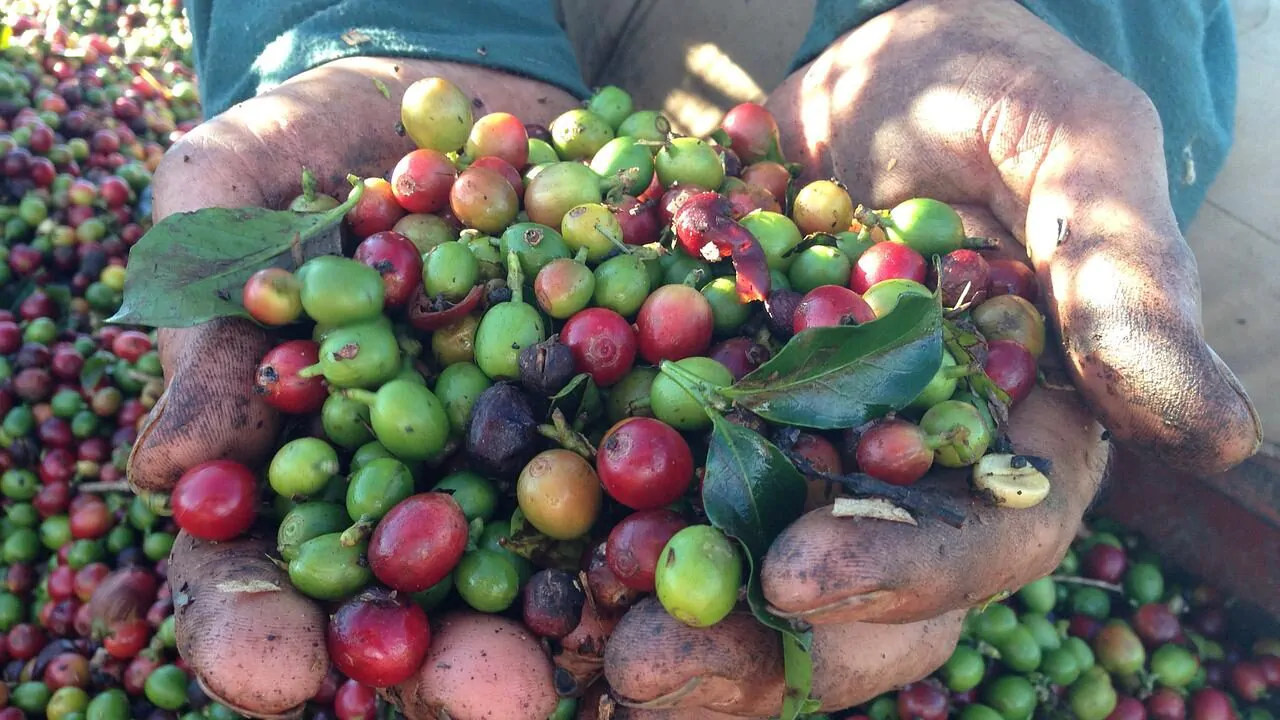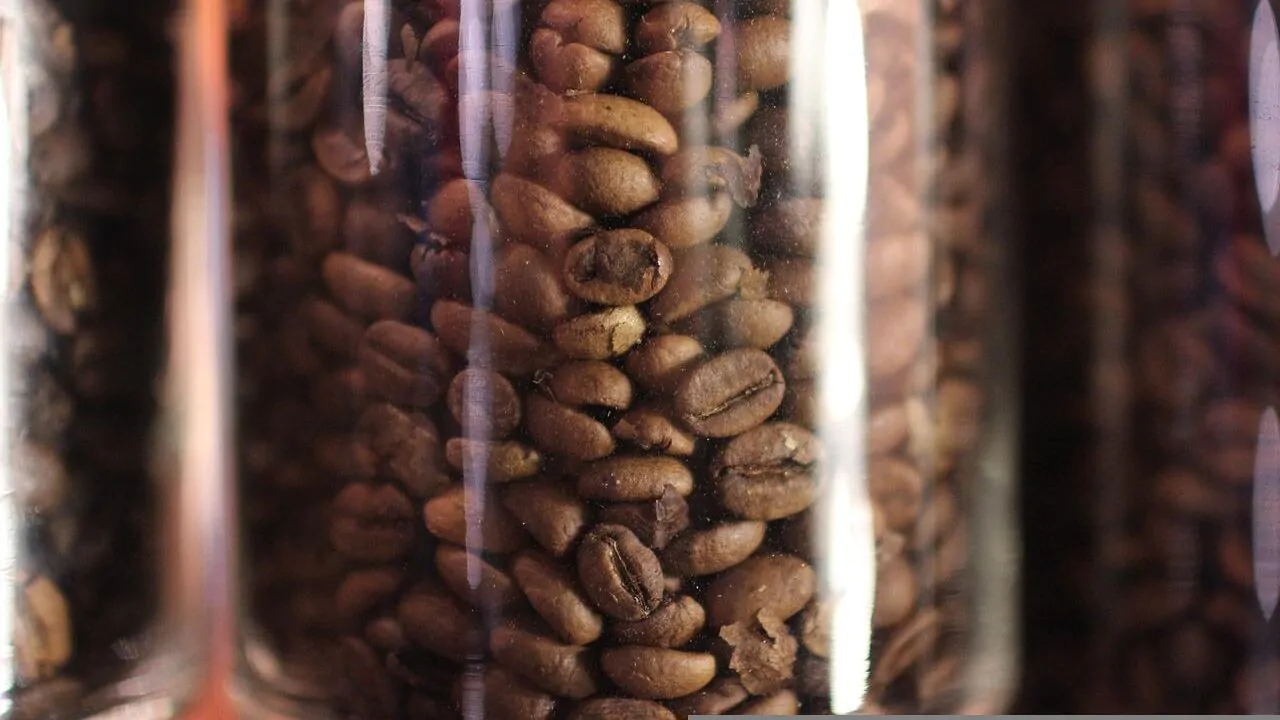Since beans are considered vegetable, does this mean that coffee beans are vegetables? Discover the true answer “Are coffee beans vegetables?”

Most people love coffee but not eating their veggies. So, if you search on Google if a coffee bean is a vegetable, you may find differing opinions. If you try searching “is coffee a vegetable?” the initial results will indicate that it is if a coffee bean is a bean, and beans are vegetables, it must be one. Now, you may be thinking that you’ve already found the correct answer, right?
This statement has one flaw. Beans actually aren’t vegetables; they are legumes. Coffee beans are not even beans; they are a seed!
Coffee is grown on shrubs that produce little red fruits known as coffee cherries. The coffee bean is actually a coffee cherry seed. So, if coffee beans are fruit seeds, is it fruit after all?
Are Coffee Beans Fruits?
While coffee cherries are fruit, the seeds are just a small component. A cherry from a coffee plant is not like a sweet cherry, since they’re bitter and hard outside, with sweet, juicy innards. Within the cherry is a slimy layer, protecting the seed.
Does that mean coffee cherries are coffee flavored cherries? Sadly, no. Some people describe it as similar to watermelon, mango with a hibiscus-like or rosewater scent – but, the slimy texture is unappetizing.
In short: “Are coffee beans vegetables?” They’re not. They’re the seeds of fruit.
How Do Coffee Plants Grow?
It’s one thing to know how to brew coffee, it’s another to learn about the life cycle of coffee. Without lecturing you, there are the most important points.
Coffee cherries have a fleshy texture, and turn red when ripe. They occasionally look purple or yellow. Coffee cherries grow on bushes and shrubs with deep, waxy green leaves. They usually take a year to flower, and another year to bear fruit.
As mentioned earlier, when the husk is removed, there’s a pulp-like layer. Inside the pulp should be two flat-sided coffee seeds or one rounded seed, aka peaberry coffee. Peaberry coffee is rare, appearing in fewer than 10% of cherries. The beans are removed, dried, and roasted. After that, grind your coffee as normal and brew using your favorite method. You can read our guide on how to make French Press coffee at home and our Moka Pot coffee brewing guide.
How Coffee Beans Are Harvested

For the most part, coffee cherries are hand-harvested. Older shrubs produce the most cherries, so they may be “strip picked,” meaning they are pulled from a limb to collect as much as possible. Two methods can be used for extracting the coffee beans.
The Dry Method
The dry method is considered the traditional route. The cherries are spread in the sun’s rays, to be rotated and turned constantly, letting them dry naturally. Coffee roasters then mill the cherries, hull them, and extract the seeds from the inside using specialized machinery.
The husk of coffee cherries, or cascara, dries out in the sunshine. Some people brew cascara tea. Try a cup of cascara tea to load yourself up with all the benefits of coffee cherries without consuming the fruit. It contains high levels of caffeine and antioxidants.
The Wet Method
The wet method begins by eliminating the lower quality fruit from the good ones. Then, farmers remove the skin of the best cherries, throw the husks away, and remove the seeds.
For this approach, the seeds are soaked and fermented to eliminate any remaining pulp. Remember that it’s vital to avoid over-soaking or over-fermenting the seeds.
No matter what method you use, all the coffee cherries must be dried and milled before they are eventually roasted. Prior to roasting, they’re green.
Where Do Coffee Plants Grow?

Three major coffee plant varieties are found in different regions, which impacts how the beans turn out.
Arabica Coffee
Around 60% of coffee is Coffea Arabica, also known as Arabian Coffee. Arabica plants can be found worldwide, although the majority are native to Colombia, Brazil, Ecuador, Rwanda, Costa Rica, and Ethiopia. They can also be found in Guatemala, Mexico, and some Indian regions
Coffee shrubs are suited to milder temperatures with higher humidity in subtropical areas. They thrive at higher elevations and love shade. Arabica is still a broad term with over 20 different varieties of this type of coffee.
Take Kona coffee, for example. It is is cultivated on Hawaiian volcano slopes. The unique conditions set’s Kona coffee apart and is why it’s so expensive.
Arabica is more popular than other types. The coffee has a slightly sweeter flavor than other types, with notes reminiscent of berries, chocolate, and citrus fruit.
Robusta Coffee
Robusta coffee comes from Coffea canephora shrubs, and making up around 40% of coffee beans produced. Robusta beans are mostly grown in African countries and Indonesia. They can be grown at lower heights than the Arabica coffee beans.
Robusta’s flavor is more intense than the sweeter Arabica with double the caffeine. Coffea canephora plants grow more cherries, making Robusta a cheaper alternative. That’s why most instant coffee and cheap brands opt for Robusta coffee beans for their products.
Liberica
Liberica coffee beans make up around 2% of the world’s coffee. Liberica is a plant that grows primarily in the Philippines, West Africa, and Malaysia – countries with temperatures ranging from 65°F to 80°F, and rarely fall below 32°F.
The Excelsa beans can also come from Southeast Asia. These beans were once classified as their own type of coffee bean, but these days are under the Liberica umbrella. These beans may also be grown in subtropical areas because they require humid conditions, but they thrive in places where temperatures range between 65°F to 80°F.
If you’re yet to drink these two coffees, you’re not the only one. These coffee beans are tricky to find. Related article: Is Coffee A Vegetable Or Fruit?
